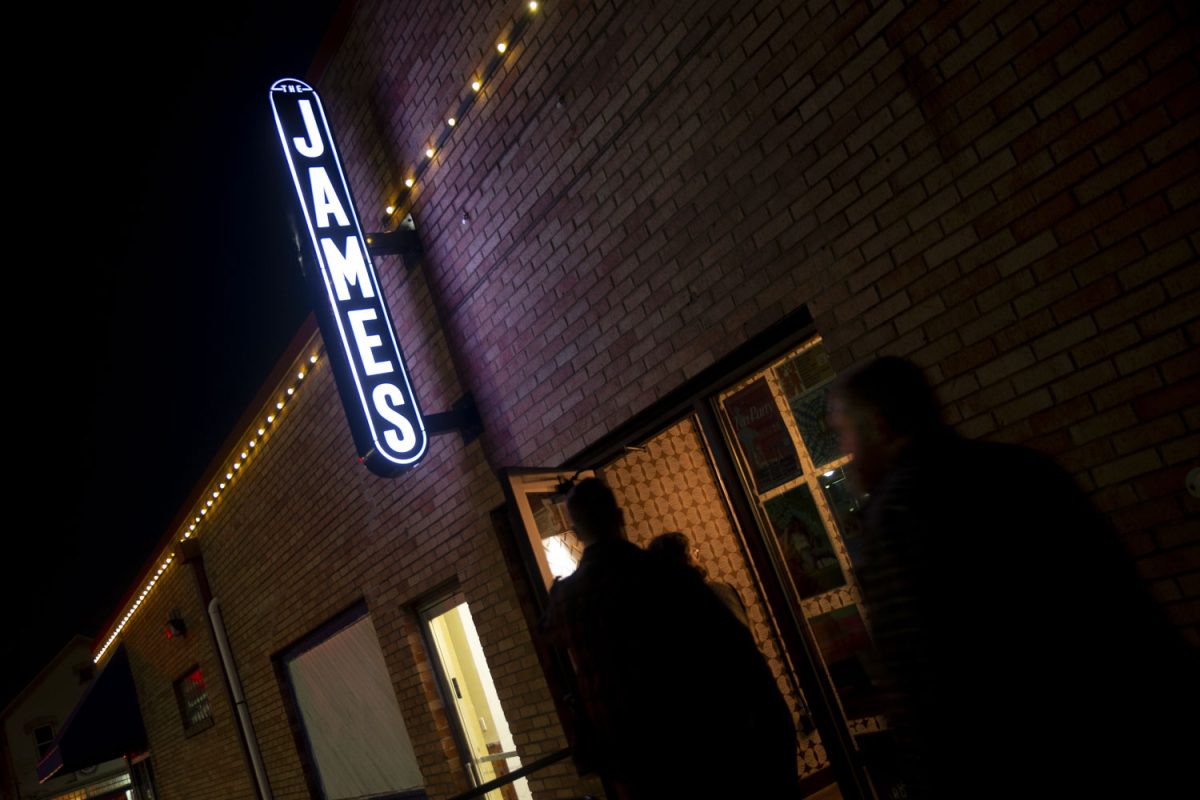A pile of records ranging in color from transparent blue to deep black was distributed among the audience. A simple instruction was raised to “break the record.” In its fractured state, the shards of LP were placed around the floor, acting as a painter’s palette for conceptual turntablist Maria Chavez’s use during her Nov. 1 performance at FEaST.
FEaST is an experimental music festival that was hosted at James Theater in Iowa City from Oct. 30 to Nov. 2. The festival was the brainchild of the late Chris Wiersema — founder of Feed Me Weird Things — an avant-garde curatorial body for experimental music in Iowa City.
The festival was Wiersema’s final curatorial project and brought together artists from around the world to celebrate the unknown frontiers of music.
An experimental approach to music is no different than an experimental approach to science. It is trying new concepts or ways of doing things against convention. The idea is to pursue a chance, to experience something incredibly irregular, and to embrace unforeseen outcomes.
“I’ve been a professional DJ since I was 17,” Chavez, Saturday’s opening act, said. “One day, I was listening to records, and there was a weird scratch that made the needle jump in a cool way.”
Chavez has been searching to replicate that feeling since. In her practice, she uses broken, scratched, and dilapidated vinyl records to create provocative and meditative soundscapes.
The highly intentional process begins by selecting a record with a low-end frequency to establish an abstract bass line or rhythm. After a foundation is established, variables are added and removed until the desired sound is created, and emotion is provoked.
Like her traditional background in DJing, Chavez moves from one turntable to another, blending sonic waves to achieve her desired outcome. She has invented a turntable stylus with multi-needle cartridges to expand this process. Her decks feature knobs and dials, allowing the fractured records to be edited beyond their physical imprint.
“Sound is the most important of all art mediums because everybody can feel it and experience it,” Chavez said.
Her work also extends from sonics to physical mediums. In Italy, Chavez imprints the same grooves of a vinyl record into marble sculpture.
“My visual art practice is focused on sonic representation, silent sound installation, where imagery of sound is represented but not emitted,” Chavez said.
The second act of Saturday’s show was Wolf Eyes, a duo from Detroit, Michigan. Nate Young and John Olson began the group in 1996, an era of boundary-pushing musical opportunities.
“I feel like we deal with a lot of stuff that’s more about discovery,” Young said. “Twelve tones of harmonics that are available are pretty simple math. It’s beautiful. But at the same time, we’re more interested in things that are, you know, dissonant.”
When they playing began, high and low frequencies could be physically felt in the room. Shifts in tone would wince forehead nerves and curl toes. Olson, a trained saxophonist, would belt an abhorrent tone from his soprano saxophone and volley it to Young with his podium of synthesizers. Then, Young would belt a vocal cry for Olson to edit and transfix in his nature.
“Music is something so much more profound than these 12 notes that everyone tries to harmonize and play with,” Young said. The group finished by inviting Chaves to join the duo in an hour-long cacophony of transcendent noise.
“I love the idea that there’s always going to be something different and new,” Gabi Vanek, head of FEaST production and longtime friend and collaborator of Wiersema, said. Vanek is a trained avant-garde bassoonist.
After years of musical consumption, from death metal to the Second Viennese School, Vanek’s interest in the abstract has grown. Today, she hosts and performs in experimental shows across the United States. “I just wanted [music] to keep getting more dissonant all the time,” she said.
Her love and admiration for the approach to playing has turned into a career, and she is proud to be able to show it to the world.
“I can’t force you to be curious, but I can invite you to be,” she said.



